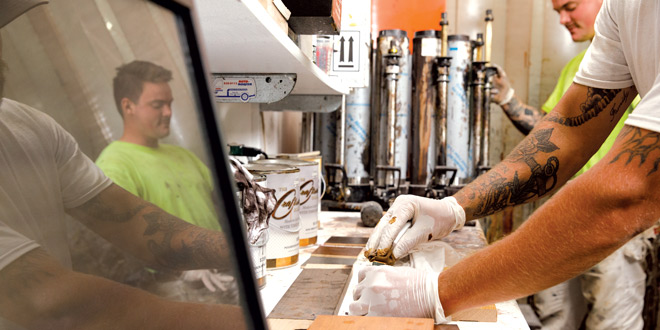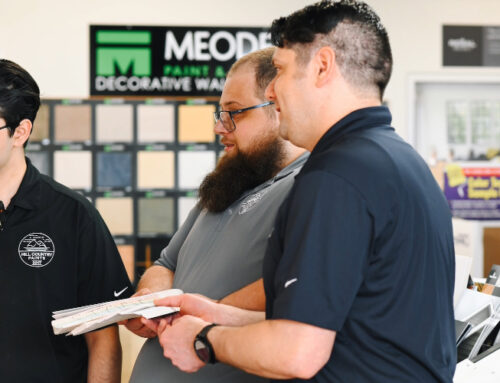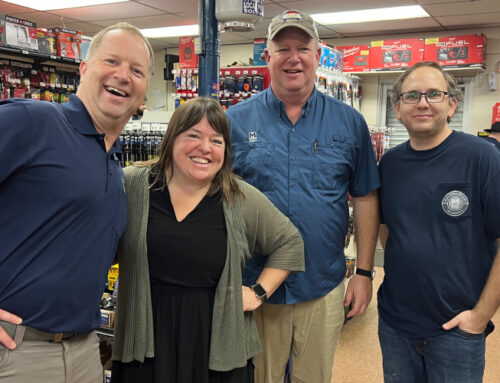Thanks to technology, paint matching has become a crucial part of providing full service at paint stores and gives customers the ability to match paint colors from nearly any object. When it comes to stains, however, matching colors is still more an art form than an exact science, and stain matchers spend years honing their crafts.
For insights into this specialized and rare service, Paint & Decorating Retailer spoke with two paint retailers who offer stain matching. Discover their best practices for offering stain matching services to bring in new customers and differentiate themselves from the competition.
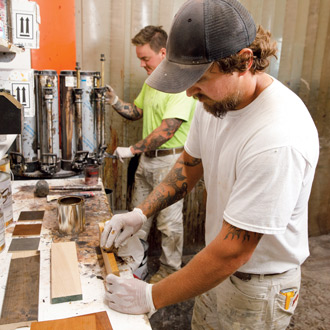 Offering a Rare Service
Offering a Rare Service
For Ted Pretasky, the stain matching services came before the store. In 2001, he opened Accent Finishing out of his garage in rural Eau Claire, Wisconsin, and offered painting, prefinishing and refinishing services for doors, cabinets, beds and other items.
He also offered a relatively rare service for customers: stain matching. Pretasky started by using an outside company for all his stain matching, but the process took almost two weeks and the end result wasn’t perfect.
He realized that as the business grew, so did the need for a refined stain matching process.
Pretasky began learning the art of stain matching himself and became proficient enough to bring all the company’s stain matching services in house.
“We wanted to be better as Accent Finishing, and the one way we could achieve that was by bringing stain matching in house and handling it ourselves,” Pretasky says.
Word caught on in the area about Pretasky’s stain matching, which brought in more customers, including clients who were looking to purchase other supplies. To accommodate these new customers, Accent Paint Store opened in 2007, offering paints, stains and sundries, with stain matching as the main draw.
“The two businesses perfectly complement each other,” Pretasky says. “At the paint store, there’s always a professional on hand to show customers the products they need and provide tips for their project. But if they don’t want to tackle a project themselves, we have Accent Finishing that can do it for them.”
The Art of Matching
Pretasky started his career as a painter in Minneapolis and taught himself how to match stain colors. He did all the stain matching at Accent Paint himself for the first five years and then passed the torch to other staff members, who he says have surpassed him in their abilities to match stain.
“Stain matching is one of those skills you have to learn as you go, and you get better and better the more you do it,” he says. “Matching stain is nothing like matching paint pigments; it’s an art form. You need to have an eye and a talent to match stain because it’s so finicky.”
At Accent Paint Store, employees mix custom stains in small batches to achieve a better match, but batches can be made as small or as large as a customer needs. Along with custom stain matching, the store has over 190 premade colors customers can choose from.
Once they provide a customer with a perfectly matched stain, Pretasky and his staff direct them to the right tools to finish the job, which boosts overall sales and transaction sizes.
“You’re not saving any money by skimping on a brush or tool because they make your job easier and provide higher-quality results; that’s why we carry a good line of oil- and water-based brushes for the stains and other products like wood filler,” Pretasky says. “We carry the products I used and trusted when I was a painter. Our customers appreciate that we have all the supplies they need for the job.”
Pretasky admits that stain matching requires time and effort, but for Accent Paint, offering that service is worth it.
“Stain matching is a difficult art to learn and master, but having stain matching at our store has brought in customers we wouldn’t have seen before,” Pretasky says. “Those customers now rely on us for more than stain; they come to us for primer, paint and accessories.”
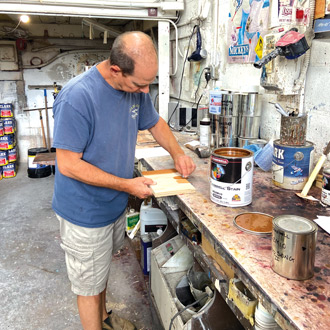 Setting Customer Expectations
Setting Customer Expectations
For over 50 years, Clark Paint Factory has been offering stain matching services to the residents of West Springfield, Massachusetts. When he was just 18 years old, president Andy Raker started with the company and took over the stain matching, learning the craft as he worked and honing his skills with years of experience and practice. Clark Paint also employs another staff member who also does stain matching and learned the process under Raker’s guidance.
Raker has seen how the craft has evolved over the years, with more dyes and pigments available to create wider arrays of colors. No matter how stain matching changes, Raker says it’s still a skilled discipline, a mix of art and science.
“You can’t use a computer to create the color combinations like you can with paint. It’s all done by eye,” Raker says. “You just have to keep doing it. You get better and better as you go and start to understand how the different pigments interact with different types of wood and what color combinations work best to achieve different colors.”
When offering stain matching, it’s important to be transparent with customers on the process and the timing. At Clark Paint, stain matching jobs take a minimum of three hours, and most take a day or more.
“Stain matching is a process. You have to continue to add pigment as you go until you reach the right color and then add the clear coat the customer will be using to be sure the color matches through the whole process,” Raker says. “We express to our customers that our attention to detail, which sometimes takes extra time, will give them the excellent quality match they want.”
For the best match, the process also requires the customer to provide a piece of wood with the stain they want to match and a piece of the raw wood they will be staining.
“Different types of wood take stain differently, so it’s best to have the exact type of wood a customer will be staining,” Raker says.
The company services local contractors and cabinetmakers, providing custom-made and matched stain colors. Raker says they also see many renovators coming in for stain matching who need to match old floors or cabinets. Word-of-mouth brings in new customers, and Raker says the store promotes its stain matching services on its website.
“A lot of people don’t realize that stain matching can save them money,” Raker says. “A good match allows you to simply touch up a particular area rather than repainting an entire room or wall.”
Like Pretasky at Accent Paint, Raker understands that stain matching is an investment of both time and money. But at Clark Paint, that investment has paid off, making them the go-to business for paint and solidifying the company as experts in the industry.
“We pride ourselves on being paint specialists and stain matching is part of our expertise,” Raker says.
“People come from all over New England for our stain matching. Our current customers rely on us to offer that service and it also has led to consistently bringing in new customers.”
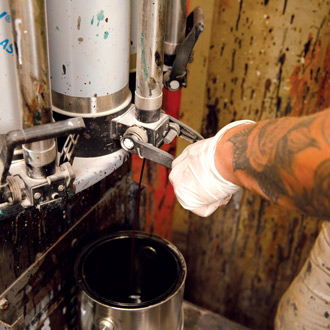 Tapping Into Stain Trends
Tapping Into Stain Trends
Just like paint color trends come and go, stain colors also ebb and flow depending on what’s hot in interior design. Check out some of the latest trends in stains.
Earth-friendly options
Several stain manufacturers now make low-VOC stains with fewer fumes and organic stains made from food-grade and natural materials.
Natural colors
Gray tones are still popular but are starting to be replaced by natural stain tones, like light oak, that bring out the natural grain in wood products.
Water-based stains
Easier to clean than oil-based stains, water-based stains dry faster and provide a softer end color because the stain doesn’t penetrate wood as much as oil-based versions.
Source: American Coatings Association, Trends in Interior Wood Coatings


